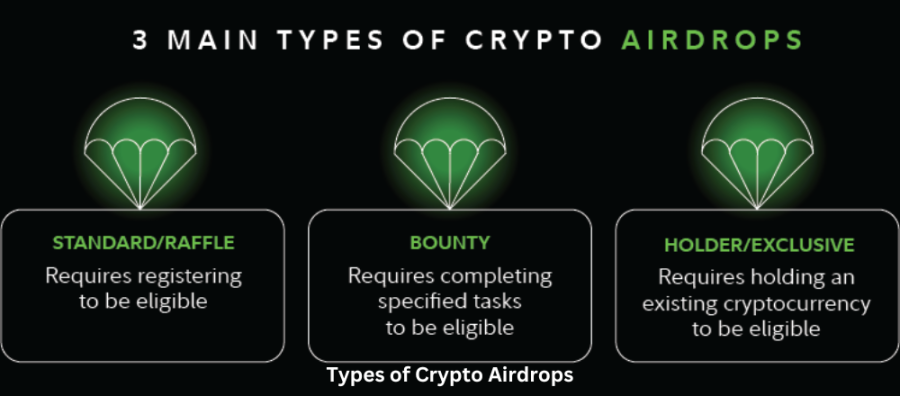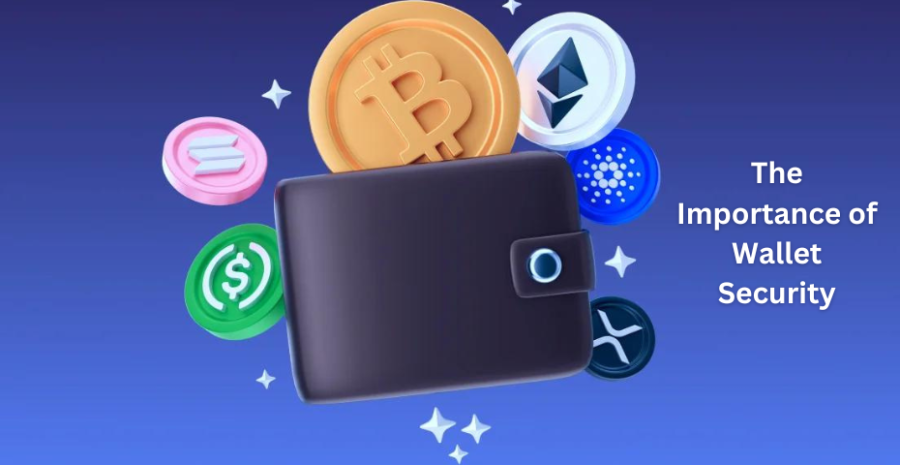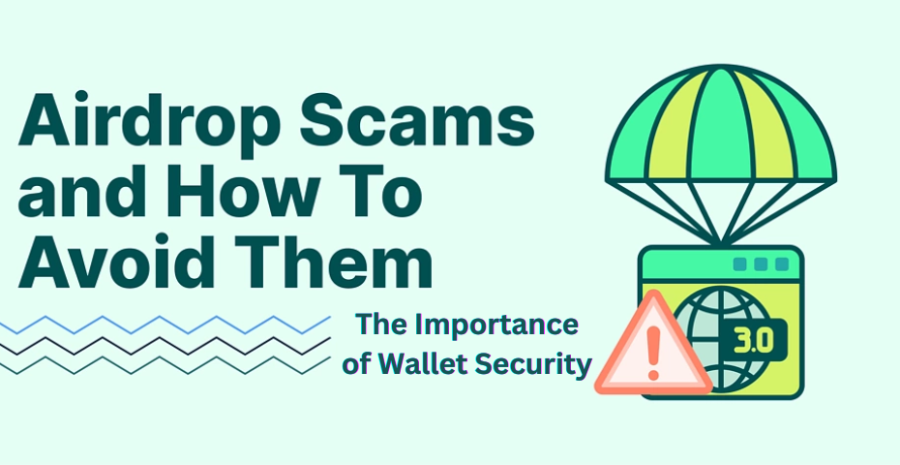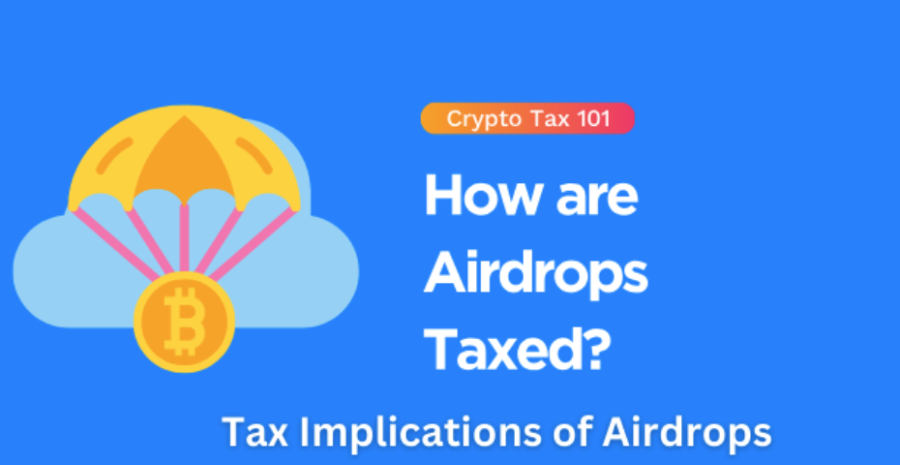
What Is an Airdrop in Crypto? A Beginner’s Guide

Cryptocurrency airdrops have become a buzzword in the digital world, especially for those who are new to the space or eager to explore ways to earn crypto without direct investment.
Simply put, an airdrop in the crypto realm refers to the process where blockchain-based projects distribute free tokens to community members, either as a marketing strategy, a way to decentralize ownership, or as part of a broader goal to raise awareness about a new cryptocurrency.
Airdrops are one of the most attractive features of the crypto world because they offer participants the opportunity to receive tokens for free or in exchange for simple tasks, such as sharing a post, signing up for a newsletter, or holding a certain amount of a different cryptocurrency.
The concept of airdrops took root during the initial coin offering (ICO) boom, where projects used airdrops to generate attention for their tokens. It became a clever way to increase user engagement and build loyalty before a coin was officially listed on exchanges.
Airdrops can come in various forms, such as direct token transfers to wallet addresses or as rewards for completing specific actions. Over time, airdrops have evolved, with more intricate models and mechanisms coming into play, including governance tokens, rewards for participation in decentralized finance (DeFi) protocols, or even incentives for early adoption of specific platforms.
But while the concept might seem like a win-win for users and projects alike, there are numerous factors to consider, including the legitimacy of the airdrop and potential risks involved.
If you are a beginner and want to dive into this exciting realm of free tokens, this guide will provide an in-depth overview of what airdrops are, how they work, the types of airdrops available, and the steps you can take to participate. We will also explore why companies choose to launch airdrops and what you need to watch out for to avoid falling into any traps.

At its core, a crypto airdrop involves distributing free tokens to selected wallet addresses, often as part of a marketing or promotional campaign.
Airdrops help crypto projects increase awareness, build community engagement, and introduce new users to their tokens. Projects typically airdrop tokens to individuals who meet specific criteria, such as being early adopters or actively participating in the project’s ecosystem.
Airdrops also play a key role in decentralizing ownership, encouraging users to become part of the community rather than just passive investors.
While the tokens distributed during an airdrop may have limited initial value, they can appreciate over time as the project gains traction.

Crypto airdrops work by leveraging blockchain technology, usually Ethereum or other platforms like Binance Smart Chain, to send tokens directly to user wallets. The project team typically announces the airdrop details, including eligibility criteria, tasks (if any), and distribution timelines.
Once a participant qualifies, tokens are sent automatically to their address. While some airdrops require users to perform actions, others are based purely on holding specific assets.
For example, users might receive tokens just for holding a certain amount of Bitcoin or Ethereum in their wallets. Participants need to keep their wallets secure and ensure they meet the conditions to receive tokens successfully.

Cryptocurrency projects utilize airdrops for a variety of reasons. One of the primary purposes is marketing. Airdrops create buzz and excitement around a new token, encouraging users to discuss the project and potentially attract new investors.
They also serve as a reward mechanism for early adopters and loyal community members. Additionally, airdrops are often used as a means to decentralize the network by spreading token ownership among a wider audience, which promotes participation in governance and decision-making processes.
In some cases, airdrops are designed to reward users for interacting with decentralized applications (dApps) or other blockchain-based services.

Not all airdrops are the same. There are several types of crypto airdrops, each with a unique purpose. The most common types include standard airdrops, where tokens are distributed to users who hold a certain cryptocurrency, and bounty airdrops, which require users to complete specific tasks such as sharing on social media or signing up for a newsletter.
Other types include holder airdrops, where tokens are sent to users based on their holdings of a different cryptocurrency, and exclusive airdrops, which are reserved for community members or early backers of a project. Each type of airdrop serves to foster engagement and create different levels of interest.

Finding airdrops is relatively straightforward, as many platforms, websites, and social media channels frequently announce upcoming opportunities.
Popular sources for airdrop information include dedicated airdrop listing websites, crypto forums, Telegram groups, and Twitter. Once you find airdrop opportunities, participating is often easy.
Some airdrops require you to hold a certain token in your wallet, while others might require you to perform specific actions, such as retweeting or following the project on social media.
Be sure to follow the official instructions and ensure your wallet is compatible with the tokens you wish to receive.

When participating in crypto airdrops, wallet security is paramount. Hackers and scammers often target users by creating fake airdrop campaigns or phishing websites to steal wallet information.
Always use a trusted wallet, such as MetaMask or Trust Wallet, and ensure it is compatible with the blockchain hosting the airdrop.
Never share your private keys or seed phrases with anyone, as doing so can lead to the loss of all your funds. It's also a good idea to use a dedicated wallet for airdrops, separate from your main wallet, to mitigate risk.

While airdrops can be lucrative, there are also risks involved, especially for beginners. Some airdrops may turn out to be scams, where fraudulent projects distribute worthless tokens or use phishing tactics to gain access to user wallets.
It’s essential to verify the legitimacy of any airdrop before participating. Be wary of airdrops that ask for upfront payments or personal information, as these are often red flags.
Additionally, always check the project’s whitepaper, website, and community to ensure they have a solid reputation. Trusted sources and careful research can help you avoid scams.

The value of tokens received through airdrops can vary widely. In many cases, airdropped tokens may have little or no value when initially distributed, but they could appreciate as the project develops and gains traction.
Some tokens may be speculative, meaning their value will depend on market adoption and demand. It’s essential to manage your expectations when participating in airdrops.
While some tokens can turn into valuable assets, others may remain stagnant or even become obsolete. Monitoring the market and the development of the project can help you determine the potential future value of your airdropped tokens.

In many countries, airdropped tokens are considered taxable income at the time of receipt. The tax implications of receiving airdrops can be complex and vary by jurisdiction.
In some cases, you may be required to report the value of the tokens as income when you receive them, and you may also be subject to capital gains tax when you sell them.
It's essential to stay informed about the tax regulations in your region and keep accurate records of any tokens you receive through airdrops. Consulting with a tax professional who understands cryptocurrency is highly recommended.

Airdrops are a vital part of the cryptocurrency ecosystem and are likely to remain a popular method for projects to distribute tokens and engage with their communities.
As blockchain technology continues to evolve, we can expect to see more innovative ways for projects to use airdrops to promote adoption and reward users.
Whether as a tool for decentralization, a marketing strategy, or a way to incentivize engagement, airdrops offer unique opportunities for both projects and users.
For beginners, airdrops can serve as an excellent entry point into the world of cryptocurrency, offering a low-risk way to accumulate tokens and participate in new projects.
11. Airdops in Markethive

Airdrops in Markethive serve as a key component of the platform's ecosystem, leveraging blockchain technology to distribute free tokens to its members.
Markethive, a social media and marketing platform specifically designed for entrepreneurs, integrates airdrops as a means of rewarding its users for their engagement, participation, and loyalty. Through its native cryptocurrency, Markethive Coin (MHV), the platform offers members the opportunity to earn tokens by performing simple tasks such as engaging with content, referring new users, or utilizing the platform's tools.
The airdrop system in Markethive not only incentivizes interaction within the community but also aligns with the company's vision of decentralizing social media and empowering entrepreneurs with digital currency. Unlike traditional social media platforms that monetize user data, Markethive provides a system where users are directly rewarded for their activity, creating a win-win situation for both the platform and its users.
The airdrops help in distributing MHV tokens more widely, fostering ownership among the community, and promoting long-term engagement. Additionally, the tokens received through airdrops can be used within the platform to access premium services, advertise, or even trade on cryptocurrency exchanges.
With its decentralized structure, Markethive aims to redefine how social media and digital marketing operate by combining blockchain rewards with a robust entrepreneurial ecosystem. For those actively participating in the Markethive community, airdrops offer a valuable way to accumulate MHV tokens and contribute to the platform's growth, further driving the vision of a decentralized, member-driven digital economy.
As blockchain technology continues to evolve, the role of airdrops in Markethive exemplifies how social media platforms can integrate crypto incentives to enhance user experience and promote economic freedom.
The Last Word
In conclusion, crypto airdrops offer a fascinating way to engage with the rapidly growing world of digital currencies. For beginners, airdrops provide a unique opportunity to accumulate tokens without direct investment, offering a low-barrier entry point into the crypto space.
However, it’s essential to approach airdrops with caution. While the allure of free tokens is enticing, the space is also rife with scams and potential risks. Conduct thorough research, prioritize wallet security, and be selective about which airdrops to participate in.
As blockchain technology continues to evolve, airdrops will likely remain a vital component of crypto marketing and token distribution strategies.
Whether you're in it for the rewards or the excitement of discovering new projects, airdrops can be a rewarding aspect of your crypto journey.
Stay informed, stay safe, and enjoy the ride!
decentralized finance and beyond.
(22).png)
About: Andries vanTonder (65)
Over 45 years selfemployed
He is a Serial Entrepreneur, an Enthusiastic supporter of Blockchain Technology and a Cryptocurrency Investor
Find me: Markethive Profile Page | My Twitter Account | My Instagram Acount | and my Facebook Profile.
